NFL draft: Yahoo Sports' top 2019 prospects, Nos. 71-80
Leading up to the 2019 NFL draft, which starts April 25, Yahoo Sports will count down our top 100 overall prospects. We’ll count them down 10 at a time, followed by profiles on our top 30 overall players.
Previous entries: 100-91 | 90-81
80. Alabama DT Isaiah Buggs
6-foot-3, 306 pounds
The lowdown: Lost amid the cavalcade of five-star recruits and All-America defenders, Buggs quietly did a very respectable job for the Crimson Tide despite not getting the national attention some of his teammates did. In a way, Buggs’ coming-out party happened about an hour south of Tuscaloosa in Mobile for the Senior Bowl. Despite playing a 15-game season for Bama’s national runner-up squad, Buggs turned around with only a few weeks to rest and prepare and had a good week there, one of four players earning Senior Bowl Defensive Practice Players of the Week.
A scheme-diverse plugger who is powerful and instinctive, Buggs elevated from the junior-college level to make an impact on Nick Saban’s defense, even improving from 1.5 sacks as a junior to 9.5 last season. He figures to be an interior lineman on the NFL level but has a little flexibility, having played everything from a 0-technique out to a 5 for the Tide and lining up on both sides of the front. His high motor and finishing ability was on full display in the second half of a dominant performance against Texas A&M.
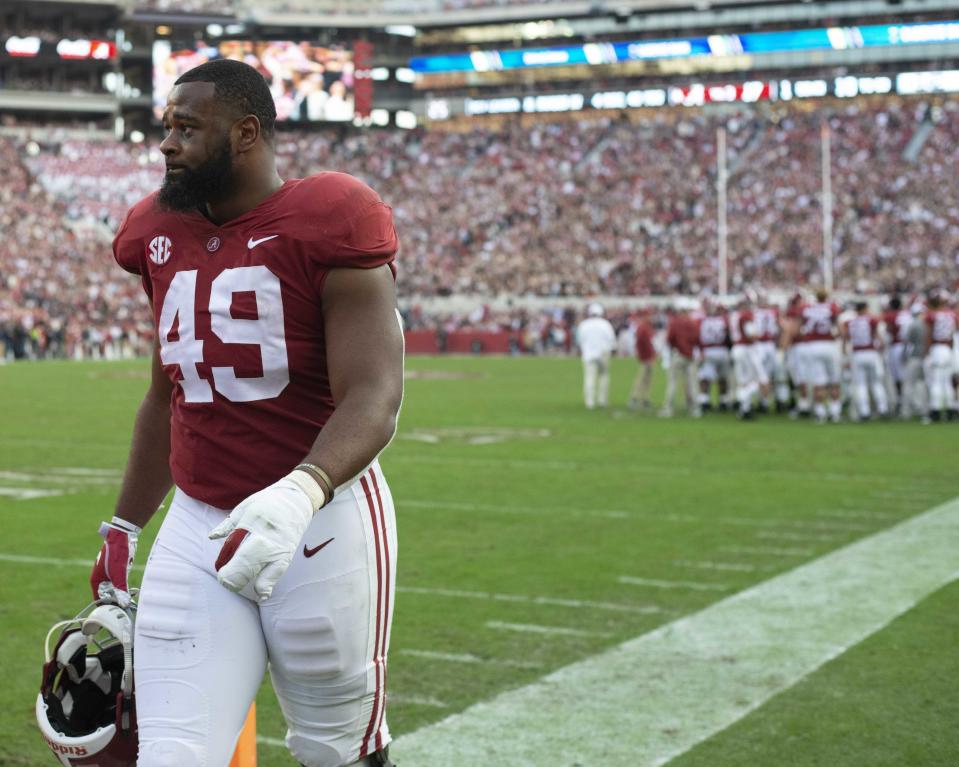
Buggs’ biggest shortcoming is his athleticism. Testing poorer than some lumbering offensive linemen in the explosion drills (broad and vertical jumps) and showing very little lateral quickness (a 3-cone drill time of 8.01 seconds), it confirms what Buggs’ tape shows: that he’s going to have to win with power and effort. Saban previously has suggested that Buggs’ motor can run hot and cold, but he could be effective as a third tackle and short-yardage defender.
Fun fact: Buggs is quite the music aficionado, with a love of R&B music. He even has his own recording studio at his house and invites his teammates over for sessions. He has played the piano for years and says it’s his favorite thing to do relaxing away from the football field. “That’s a passion I’ve had since I was small,” Buggs said at the combine. “I’m still learning how to play it more and get better at it. … The music, it calms me down and sometimes takes my mind off the hard work of football and relaxes me.”
Draft range: Round 4
79. Clemson CB Trayvon Mullen
6-foot-1, 199 pounds
The lowdown: Mullen opted not to return to Clemson for his senior season after finishing his 2018 season in style, being named defensive MVP in the national championship game victory over Alabama. In that game, he logged six tackles, a sack, an interception and a forced fumble. Interestingly, it was one of the more productive games Mullen logged in his three seasons for the Tigers, as it was his only pick last season as the team’s boundary corner.
He also didn’t allow a single touchdown reception in 2018, and Pro Football Focus credited him with a very strong 0.65 yards per coverage snap. Mullen is a tall, lean cover man who has had success in the Tigers’ various coverage packages and has some upside in the NFL’s eyes. He plays with an aggressive, attacking mentality and can recover quickly with speed.
Still, Mullen can lose shifty receivers at the top of their stems, doesn’t have the ideal strength or length (31-inch arms) teams want in a pure press corner and he can get handsy in coverage downfield.
Mullen has upside to be a No. 2 corner, and his confidence is exactly what you like at the position, but there are limitations in his game that can’t be ignored.
Fun fact: Mullen and Baltimore Ravens QB Lamar Jackson are first cousins. They grew up about 20 miles away from each other in South Florida and remain close to this day.
Draft range: Round 2 to Round 3
78. Oklahoma OL Dru Samia
6-foot-5, 305 pounds
The lowdown: Good-sized, strong-willed blocker and leader on a Sooners unit that won the Joe Moore Award in 2018 for college football’s best offensive line. Samia shifted from right tackle to right guard (and back to right tackle) in his four seasons, starting the majority of OU’s games in his career. In 2018, he was named second-team All-American and first-team All-Big 12 from the conference’s coaches. Most NFL teams appear to be projecting him inside, but his positional experience and versatility could make him a candidate to pinch hit on the outside as well.
Samia has earned a reputation as a player who goes beyond the whistle, sometimes to a detriment. He was thrown out the game against West Virginia for throwing a punch on a night when tension was palpable. On the flip side, his vinegar-in-his-veins style also could endear Samia to veteran offensive line coaches and win him respect as a rookie. Watch here as Samia went after Bama DT Quinnen Williams after a questionable hit on Oklahoma QB Kyler Murray in the national semifinals:
Quinnen Williams blew by Samia and then drove Kyler to the ground.
Dirty hit? Maybe.
Elite defensive line play? Absolutely. pic.twitter.com/mgfvYSMdSh— RJ Young (@RJ_Young) December 30, 2018
It might not be the smartest play, and Samia also kneed his QB in the head while going after Williams. Samia also was flagged for unsportsmanlike conduct on an extra point in the game, resulting in a longer ensuing kickoff. That style will be frowned upon by some teams yet beloved by others.
Physically speaking, what stands out with Samia are his quick feet and nice length. He can reach the second level and finish in the run game, although he’s going to be able to brawl all day with country-strong defensive tackles and likely will need to play more of an angles game to consistently win in the trenches. Still, Samia is a tone setter who could develop into a quality offensive guard.
Fun fact: Samia’s right-arm sleeve tattoo – which took 15 hours to complete – represents his culture (he’s half Samoan) but also symbolizes (with octopus tentacles) his ability to multitask and juggle different assignments.
Draft range: Round 4
77. Buffalo QB Tyree Jackson
6-foot-7, 249 pounds
The lowdown: Perhaps the most fascinating QB prospect in the entire 2019 draft class, Jackson might actually be – don’t laugh – the closest physical comparison to Cam Newton since he was drafted in 2011. Jackson isn’t nearly the dynamic quarterback that Newton has become, but there’s something to be said for a player with this rare of dimensions being able to move the way Jackson did at the NFL scouting combine.
His height, weight, arm length and hand size all put him in the top 5-10 percentile for quarterbacks, and Jackson still ran a shocking 40-yard dash (4.59 seconds), vertical jump 34 1/2 inches, broad jump 120 inches and turned in respectable times in the 3-cone drill and 20-yard shuttle – all better numbers than a few tight ends at the combine. That alone will get Jackson long looks from NFL evaluators.
There also are passing traits to match the athletic hype. Jackson has a hose for an arm, throws well on the move and off-script, and Jackson often scalded teams that sent pressure his way with big throws while being hit or hurried.
Ok this is really impressive. Pocket presence, escapes and makes a perfect throw off his back foot on the move over 40 yards in the air. #DraftNotes #DraftTwitter pic.twitter.com/MtCb34o32R
— Fair Shake Football (@FairshakeFB) January 18, 2019
That said, Jackson also struggled badly in the red zone (four interceptions on 48 attempts inside opponents’ 20-yard line last season), was a 56 percent career passer in the MAC and too often threw recklessly on deep passes into traffic.
Jackson’s 20 best throws from last season might blow your hair back. His 20 worst plays might make you want to pull all that hair out. He absolutely is an intriguing project who is worth developing over a year or two, maybe for a team such as the Los Angeles Chargers that needs to start thinking about its next QB. Jackson considered a grad-transfer option after last season before entering the draft, and perhaps another year of college football might have made him a top-50 pick next year.
But a stripdown of some mechanical flaws, such as an elongated throwing motion and a penchant for carrying the ball at his hip while he’s scrambling to throw, would do Jackson a lot of good. And before long, you might have something really special.
Fun fact: As a senior in high school in 2014, Jackson suffered a dislocated kneecap and damage to his patellar tendon in his team’s semifinal playoff victory. A mere six days later, Jackson was out there gutting it out to try to win a state title. “I tried to do what was best for the team, so I tried to go out there and play,” Jackson said. “I played all four quarters. I can’t say I was 100 percent. It was tough.” He wore a brace and was limited as a runner, rushing four times for 14 yards, and he completed 17 of 27 passes for 102 yards and one touchdown in his team’s 44-8 loss. But Jackson earned respect from his teammates and opponents for his toughness.
Draft range: Round 3 to Round 4
76. Georgia WR Riley Ridley
6-foot-1, 199 pounds
The lowdown: The younger brother of 2018 Atlanta Falcons first-round pick Calvin Ridley, Riley most certainly will hear a lot of comparisons because of his last name. There are subtle and clear differences in the receivers’ games, and Riley has done enough to stand out on his own as a possible Day 2 draft pick. Although his production doesn’t stand out compared to other receivers in this class, that was more of a function of playing in a talented till of receivers in what is a run-heavy offense for the Bulldogs.
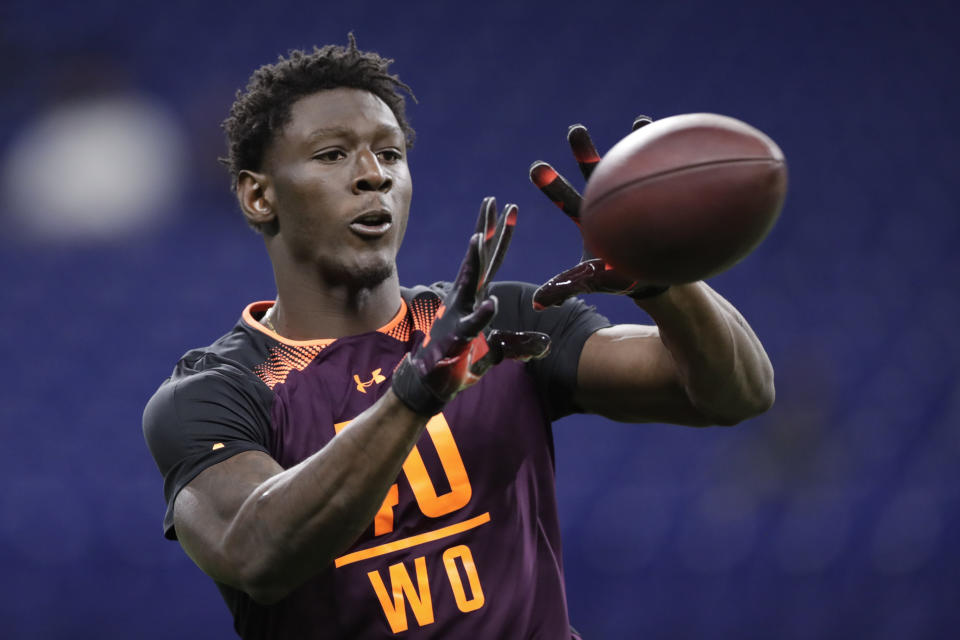
What stands out on tape with Ridley is his ability to carve off routes impressively (especially working back to the ball) and create really good space despite being asked to run a lot of short and intermediate routes. With a nice get-off, good stop-start ability, body control, solid route running and a dose of strong competitiveness, Ridley made himself into a viable option for the Bulldogs. Even not being thrown to all that much, he made his impact felt with 13 touchdowns and a 14.6-yard receiving average in 28 career games.
Does Ridley have one elite trait? He’s not especially big (playing weight below 200 pounds) or long, and his athletic testing numbers at the combine were substandard. His 4.58-second 40-yard dash wasn’t as bad as some made it out to be, but Ridley‘s 30.5-inch vertical jump puts him in the bottom-five percentile, and his 3-cone time wasn’t much better (7.22 seconds, eighth percentile).
We suspect Ridley profiles to being a very solid No. 2 receiver but never a player who will carry an offense outside of short stretches. He has not shown much in the way of downfield ability, and Ridley isn’t close to a YAC machine, so what you see is what you get. There also might be some maturity concerns that must be eased (he had a misdemeanor marijuana possession arrest in 2017), although Ridley is very well-liked within the program. The third-year junior turns 23 in July.
Fun fact: The 2017 season’s national title game between Alabama and Georgia pitted Calvin vs. Riley. Coming into the game, Calvin had 220 catches in college football to Riley’s 20. Little bro shocked many by logging career highs in catches (six) and yards (82), but big bro – despite only three grabs in the game – caught a crucial second-half TD to cut into Georgia’s 10-point lead and his team escaped in the overtime thriller with a victory.
Draft range: Round 3
75. Oklahoma RB Rodney Anderson
6-foot, 224 pounds
The lowdown: Had Anderson not gone down in the second game of the 2018 season with a torn ACL in his right knee, we perhaps might be talking about a player who deserved first-round mention. That ailment, along with two other concerning ailments on his medical records – a broken leg in the second game of the 2015 season, plus a fractured vertebra in the spring of 2016 – have teams doing serious work on this injury-prone star.
In his one full season of college football, Anderson was nothing short of electric in 2017 with 1,161 rush yards and 13 TDs on only 188 carries (6.2-yard average), also averaging 16.5 yards and scoring five more TDs on 17 receptions. Rushing 26 times for 201 yards and two TDs against Georgia in the national semifinals was nothing short of a showcase performance against an excellent defense.
How do you grade a player who averaged a touchdown every 10.3 touches but one who couldn’t stay on the field? It’s a tough ask for NFL evaluators, who have pored through his 2017 tape (the TCU game was exceptional) and witnessed the star potential. Anderson has great vision in the hole, breaks tackle attempts in space and has flashed a wicked stiff-arm.
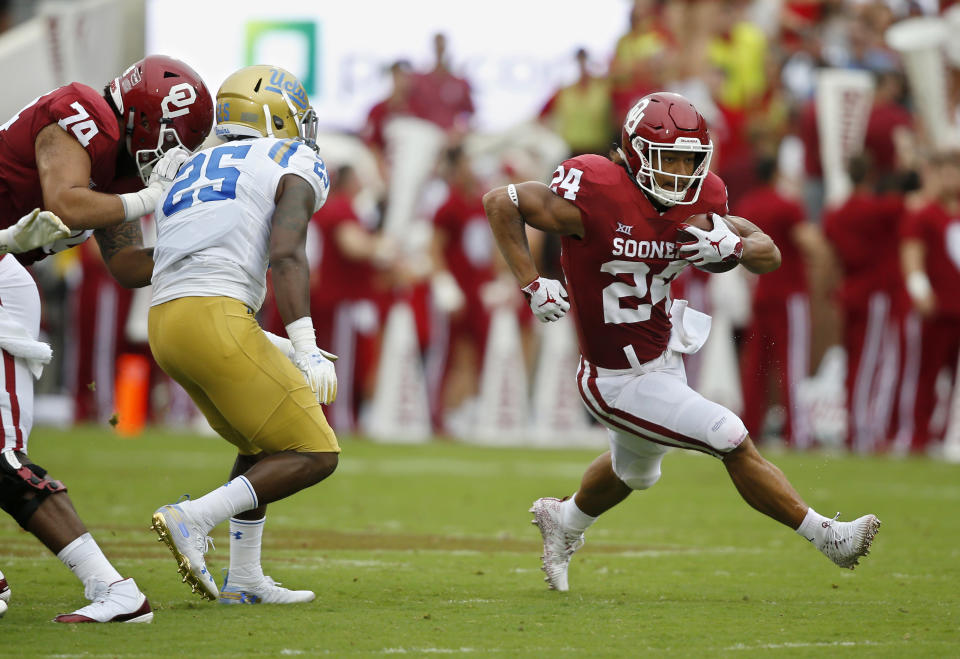
The extensive injuries will give teams major pause, and the short-term rehab timetable will have Anderson missing much of his NFL team’s offseason action and perhaps have him coming onto the field behind in his learning curve. There also are holes in his game, such as some really poor work as a pass protector, an upright running style and the lack of an extra gear that will make it hard for Anderson to run away from NFL defenders.
Fun fact: Despite Anderson earning a reputation of being quiet around media and (the horror!) not having any social media accounts, Anderson’s mother has described him as an “adrenaline junkie.” He has a list of adventures he’d like to go on in his lifetime, often was seen skateboarding to class on Oklahoma’s campus and met his own goals of learning how to jump out of a pool in waist-high water and perform a standing backflip.
Draft range: Round 4 to Round 5
74. Virginia DB Juan Thornhill
6-foot, 205 pounds
The lowdown: The athletic Thornhill earned a starting safety role as a sophomore, adding weight after playing a little cornerback as a freshman and intercepting an eye-opening 13 passes over his final three seasons. He showed playmaking ability with the ball in his hands in 2018, picking off six passes (third-most in the country, tallying 141 return yards) and running back a blocked extra point vs. Indiana. He wasn’t used as a returner, but Thornhill has special teams potential, having been used on the Cavaliers’ “hands team” and also possessing the ability to be a gunner or jammer.
His NFL scouting combine performance was an exercise in duality. Thornhill’s athletic testing was sensational, turning in a 4.42-second 40-yard dash, a 44-inch vertical jump and a 141-inch broad jump, along with an impressive 22 reps on the bench press. But behind the scenes, we had multiple teams question Thornhill’s football acumen, which for a three-year major-college starter is concerning.
But with his positional versatility (he can play deep safety, come down in the box and cover the slot), his top-shelf athleticism and his closing ability (see the N.C. State game; a great pass defended in the first quarter and a terrific tackle for loss as a slot blitzer), we can’t be too down on Thornhill’s NFL stock. He should be a useful player for a team, but we are not as high on him as some other analysts.
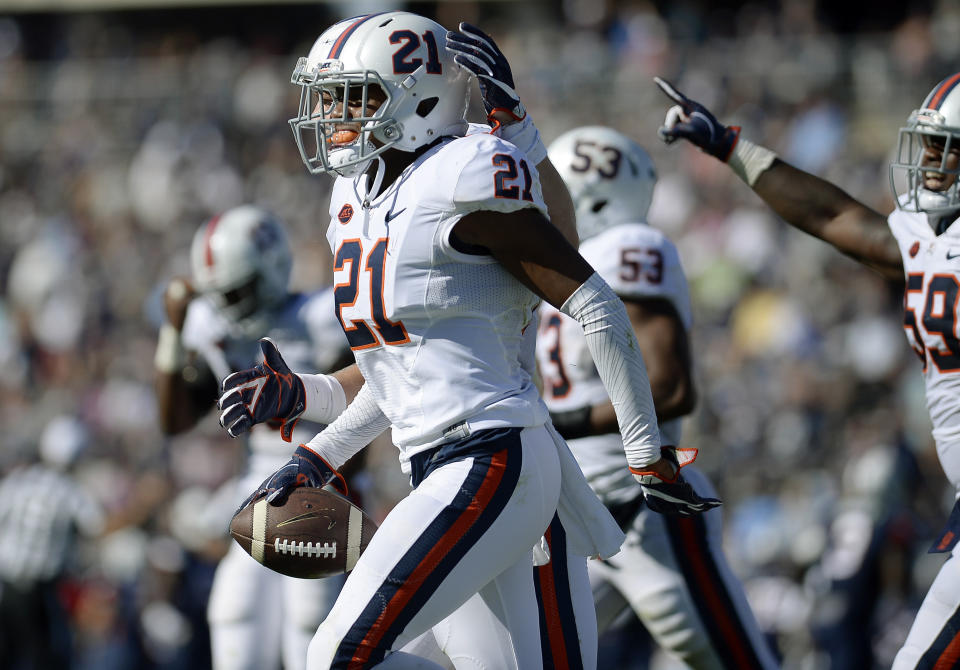
Fun fact: Before you do anything else today, please watch Thornhill dunk in his high school state championship. Who does he think he is, Ronald Curry? Yes, Thornhill was one of the best prep athletes in Virginia when he came out of Altavista High School, averaging 16 points per game and having won three state titles at a school that routinely produces hoops talents. (Even still, the only college that reportedly recruited him seriously was Radford.) The football team is less prolific in terms of producing big-time players, but Thornhill’s attention was greater in that sport (he also played quarterback in addition to safety), as the three-star recruit committed to Virginia over Duke, Virginia Tech and others schools. He could become Altavista’s first NFL player drafted since 1968.
Draft range: Round 2 to Round 3
73. Michigan CB David Long
5-foot-11, 196 pounds
The lowdown: One of two prospects named David Long in this class (the other is a West Virginia linebacker), the Wolverines’ Long was a standout on one of the nation’s most talented defenses. While he’s just starting to get his proper national due, draft analysts have been on him for a while now, especially after Long finished his junior season having allowed a mere nine receptions (!) in 13 starts in 2018. Long started for only two seasons at Michigan and didn’t flash big-time production: three interceptions, 14 passes defended and 38 tackles in his final 26 games.
Even still, his fearlessness and ferocious style are a blast to watch on film. Long takes all comers. even bigger receivers, and will get physical right off the snap. He’s patient, tough, exhibits good technique and displayed even more raw athleticism than many expected at the NFL scouting combine. Long’s 3-cone time of 6.45 seconds is elite; only a handful of corners have bested that time since the year 2000.
Long is a bit of a tricky evaluation in that his size is merely average (except for his long arms and big hands), but his shortcomings never really were exposed this past season. There might be a slight adjustment when he faces elite size and speed at the NFL level, and even quicker slot receivers might best him before he makes a full adjustment. But there’s just something fascinating about his competitiveness and effectiveness the past two seasons in the Big Ten not to take notice.
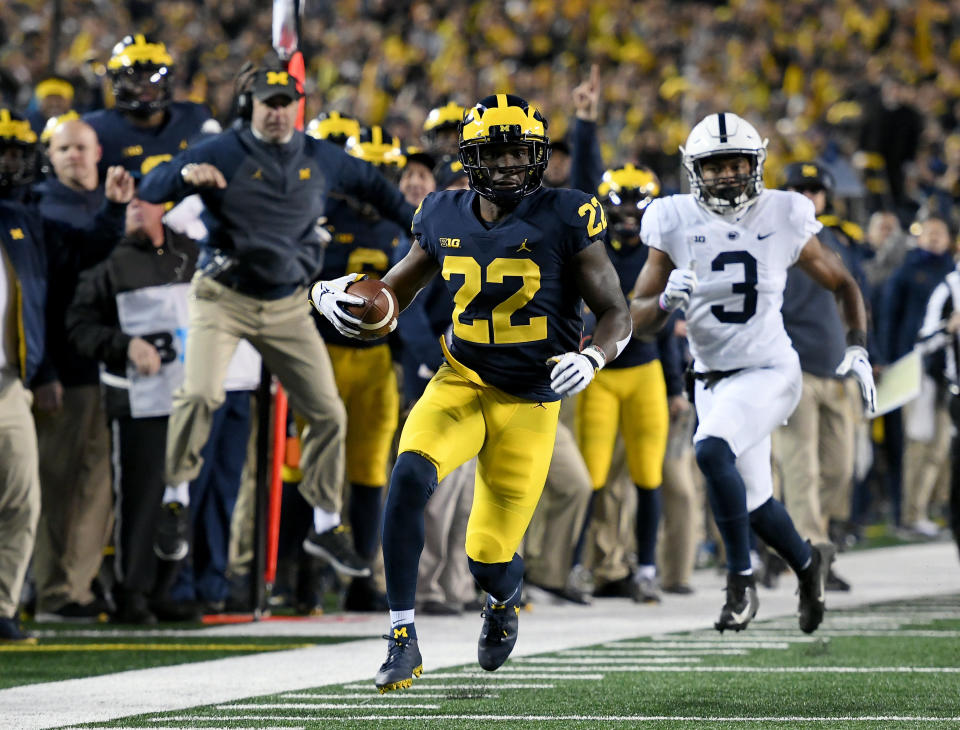
Fun fact: Jim Harbaugh once climbed a tree on a recruiting visit to try to lure Long. Risking life and limb, Harbaugh apparently accepted a dare from Long’s sister to get up there, and he brought Long’s younger brother up to enjoy the view. The stunt clearly worked. Long decommitted from Stanford and went to Michigan.
Draft range: Round 3
72. West Virginia QB Will Grier
6-foot-2, 217 pounds
The lowdown: After transferring from Florida, where his college career got off to a rocky start, Grier emerged as the perfect trigger man for Dana Holgorsen’s Air Raid offense. In 22 starts for the Mountaineers, Grier threw for 7,354 yards, averaged 9.4 yards per attempt and had a 71-20 TD-INT ratio. That seemed to be the perfect antidote for a tumultuous freshman year with the Gators in 2015 in which he struggled on the field and was suspended one year by the NCAA for testing positive for a banned substance.
After transferring and sitting out a year, Grier’s talents were on display the past two seasons. He’s dangerous and effective on third downs, ready to throw past the sticks and give his receivers a chance to make a play. Grier also stepped up on big stages and wasn’t afraid of the limelight, turning in some big performances, especially in some fourth quarters and under duress. Although his arm strength is not considered plus by NFL standards, Grier was effective throwing downfield (check out his first-quarter 48-yard TD pass against Texas Tech) with good touch and placement and was very effective at looking off safeties and getting them to bite.
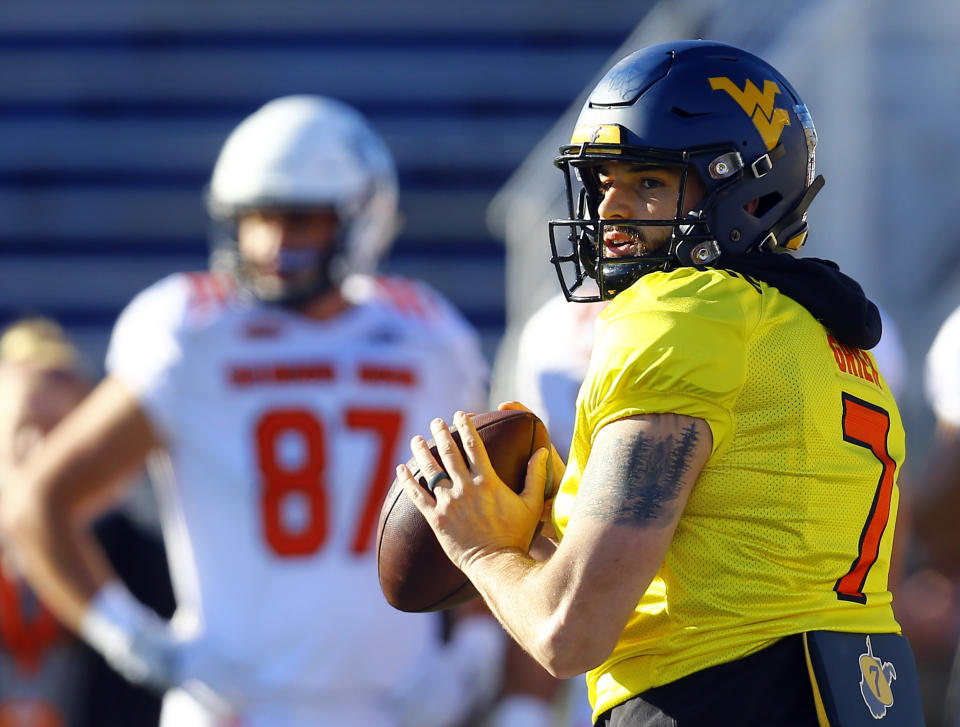
Grier might carry the stigma of being a product of a spread system, but his full-field progression work and patience belie that. Still, he often held onto the ball too long, taking devastating sacks, and he struggled at times in the red zone. Grier also has a throwing motion that might need tightening, and he has put the ball on the ground at a higher rate than you’d like to see. He also had a rough go of things at the Senior Bowl, struggling during the week’s practices while operating under an offensive system that was foreign to him.
He won’t be for everyone, also lacking in ideal size, but Grier has the makeup of a rookie backup who can elevate to starter status in the right system. Don’t dismiss his competitiveness, nor his natural quarterbacking DNA.
Fun fact: Grier had quite the interesting youth and prep career before college football. In a Pop Warner game, he once battled against Pittsburgh Steelers third-round QB Mason Rudolph (who played cornerback at the time!) before those two renewed their rivalry in the Big 12. Before that, Grier was an elite prep recruit as a passer, winning the Parade National High School Player of the Year in 2013 and winning multiple state titles while playing for his father, Chad Grier, who was a backup QB at East Carolina. In the semifinals of the North Carolina state playoffs during his junior season, Grier led Davidson Day to a – get this – 104-80 victory while throwing for a prep-record 837 passing yards on 35-of-42 passing with 10 TDs. His senior year, Grier threw for a nation-best 77 TDs and ran for 13 more.
Draft range: Round 3
71. Memphis RB Darrell Henderson
5-foot-8, 208 pounds
The lowdown: Any back who averages 8.9 yards per rush, 15.5 yards per catch and scores 25 touchdowns in a season of major college football, as Henderson did in 2018, is going to catch the NFL’s eyes. Sure, Henderson racked up boffo stats against a few poor defenses in shootouts, but there’s no denying that he has the quickness, light feet, north-south speed and balance after contact to make it in the league.
#Memphis RB Darrell Henderson — 4.49 (o) 40 time at 5-foot-8, 208. Can see the explosive play ability all over his film. @NFLMatchup pic.twitter.com/deqFcrIEal
— Matt Bowen (@MattBowen41) March 1, 2019
Henderson didn’t test exceptionally well at the NFL scouting combine, and his size might give power-run teams pause. There’s also the matter of the shocking number of gaping holes through which he can be seen running in college, and those holes won’t be there like that in the NFL. He also might need refinement as a pass blocker and receiver, but Henderson was split out often in college and showed great open-field ability to do damage.
Henderson totaled only 519 touches in college (in 38 career games) which is appealing because he has a lot of tread left on his tires. But consider that Henderson never was a true workhorse, with only five games with more than 20 touches, and he might be only a mismatch piece in the NFL. Still, with that kind of juice, there’s a role on offense (and perhaps special teams) for a back such as this.
Fun fact: Coming out of tiny Batesville, Mississippi, just down the road from Ole Miss and about two hours’ drive from Mississippi State, Henderson never landed an offer from any SEC college despite putting up massive rushing numbers in high school – more than 2,000 yards in each of his final two prep seasons. He left Memphis as the second-leading rusher in school history.
Draft range: Round 3 to Round 4
More from Yahoo Sports:

